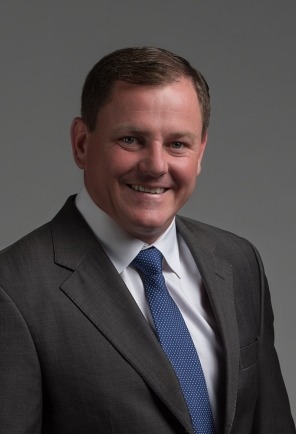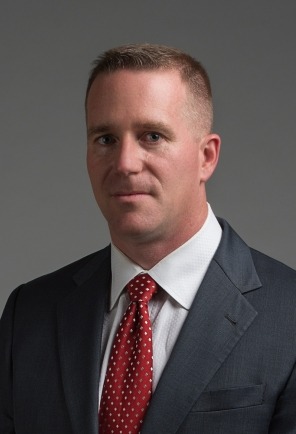Is Private Equity Suffering from the U.S. Unemployment Rate Drop?
This article was originally published in AltAssets.
High employment might be great for the U.S. economy, but not necessarily so for private equity investors. Alvarez & Marsal’s Private Equity Performance Improvement practice managing Director Tim Keneally, Senior Director James Guyette and Director Mark Schmidt investigate the issues.
May’s employment report showed a gain of 223,000 jobs, a low unemployment rate of 3.8 percent (3.3 percent in the manufacturing sector) and a 0.3 percent month-over-month rise in average hourly earnings. The Labor Department also reported that in April there were 6.7 million jobs available and only 6.35 million Americans seeking employment. While high employment rates are good news for the macroeconomy, it is potentially bad news for private equity sponsors.
The most common problem our industrial private equity clients face is recruiting and retaining talented employees for their portfolio companies. Some of their portfolio companies are fighting for job candidates with their wallets by increasing hourly wages. But this leads to an arms race: as one factory raises the ante with higher hourly wages, workers jump from one plant to the next. Employees win with wage inflation, but companies struggle with the higher turnover and less efficient new hires.
Employee turnover creates inefficiencies in the workplace as the human resources department is forced to spend more of their time on recruitment than on employee relations and personnel development. On the shop floor, new employees are less efficient, potentially less safe due to lack of experience and often pull more experienced employees away from their work to train. Since the hourly labor supply cannot keep up with the factory’s demand, manufacturing managers are forced to find alternative solutions. While tight labor markets present many challenges, several of our most successful clients are keeping pace by focusing on automation and technology; optimizing footprints and top-grading their first line supervisory staff.
Automation and Technology
The best areas to automate are those where employee safety (e.g. repetitive or strenuous tasks or dangerous environments) and product quality are of the highest concern. These investments are often less about replacing people with equipment, and more about leveraging experienced employees with the tools they and the company need to remain competitive.
But how do you know what to automate? That’s where technology comes in, specifically the Industrial Internet of Things (IIoT). When most manufacturing managers define capacity in their plants, they use the longest cycle time of a value-adding process to describe the bottleneck or the limiting factor in production. That’s true in a static system, but in reality, we work in dynamic systems where the bottleneck moves with factors like the type of product, the age of the equipment, the uptime of the line and even, in some instances, the weather.
Knowledge of limiting factors is the next step in achieving productivity gains to reduce the need for labor. Over the last decades, we have installed sensors throughout production lines but the data is frequently trapped in a single workstation and never aggregated for analysis to understand independent variables and bottlenecks. The implications of not analyzing this data are enormous, as it can impact staffing, capital expenditures and even the pricing of a product (i.e. both the top line and bottom line). Manufacturing companies need an IIoT strategy.
What is the IIoT? Let’s illustrate it in a way operating partners can understand. The IIoT is like aggregating the spend data gathered from multiple portfolio companies previously isolated and then connecting it to systems and the internet where it can be analyzed, monitored and reported to leverage spend. Manufacturing portfolio companies need to link data-gathering to facilitate holistic analysis so managers can make informed decisions about capital expenditures, variable labor and product costing. The most competitive manufacturing companies embrace this intersection of IT (information technology) and OT (operational technology).
Footprint Optimization
Please note we are saying footprint optimization not rationalization. Rationalization automatically implies you have too many facilities. Although that may be the case, it is best to first review our physical presence and capabilities to best support our customers before we decide to reduce excess capacity. We find that multi-site firms have a unique opportunity to leverage their network to compete in tight labor markets. Specifically, they can optimize production location, build technology flexibility across geographies and they can invest in their facilities and processes.
Firms can achieve redundancy and flexibility across geographies by building the capability of producing the same products in multiple locations. This allows for shifting production to available capacity and/or to looser labor markets without jeopardizing quality, delivery or cost. One of our PE client’s portfolio companies, a contract manufacturer, was facing capacity constraints and high turnover in the tight West Coast market. Through an effective sales and operations planning process, we identified production capacity in their eastern plants. The challenge was that certain formulas did not easily translate across facilities with different equipment. While we were ultimately able to shift significant volume and reduce unit costs on fully staffed production lines, reformulation costs made certain products bad candidates for transfer. The company learned from this experience, and when they designed a new west coast plant, they duplicated the technology used in their eastern plants. Today they can shift production easily across their network.
Companies can also reorient production across physical locations to optimize their staff’s skill sets and competencies. One recent client serving medical and commercial injection molding markets was struggling to find employee talent capable of managing two distinct production and quality system requirements. By segmenting their products among manufacturing sites, they could focus each site on specific market and process strengths and avoid having to fill redundant positions (e.g., customer service in multiple locations for the same client; quality engineers for multiple quality systems in multiple plants). We helped them successfully transfer their commercial / automotive business to a plant that focused on those customers and requirements. The remaining plant was then focused on serving its medical device customers. This allowed them to reduce manufacturing overhead and avoid filling redundant positions. The “split and focus” strategy paid off as customer deliveries improved, quality improved and earnings increased even though volume decreased.
In addition to shifting production and staff capabilities, footprint optimization often includes top grading equipment, facility capabilities and production processes. Aside from full automation, there are often facility investment opportunities to increase employee efficiency. The key challenge is to identify and influence the factors driving human effort. At a food manufacturer facing employee shortages, we found that allergen separation requirements were driving excessive cleaning and thereby reducing employee efficiency. We worked with the scheduling team to “daisy chain” allergens, and with customers to increase production run lengths to reduce the downtime caused by cleaning.
Top-grade Management
When it comes to driving performance results, the first line supervisor role is the most important position. They are the bridge between strategy and execution. Operating partners should not under estimate the importance of this rule when it comes to changing the culture of the company.
Top-grading first line management does not only mean removing and replacing ineffective supervisors. Although that can be an option, it should not be the first. Many first line supervisors were promoted because they were technically good in the departments where they worked as operators. They typically know the products inside and out, the manufacturing processes as well as the process engineers, and how to circumvent the company bureaucracy faster than anyone. Unfortunately, they may not necessarily know how to be good managers.
Just because we give them the management title does not mean they automatically get the skills to become a leader. Often, they are thrust into leadership roles without management training. Should we be surprised when they do not perform to expectations? .(Assuming we even articulated the expectations to start with.)
Many private equity clients complain there is neither the time nor the budget to provide management training. If training is not practical or possible, set-up a performance management mentor or coach. Someone who has been in their shoes and knows the basics of managing: planning, organizing, leading and controlling. This is free in that there are no additional costs incurred. Even more, it benefits both the performance manager and the sponsor. This is a cost-effective, overlooked and underutilized approach to top-grading your first line supervisor staff.
If the coaching fails, or you have already determined that coaching will not help to produce results, start searching for a replacement manager. This typically costs more in terms of time, effort and money but is often necessary to bring fresh ideas and approaches. It is not uncommon for first line supervisors to have little insight beyond the company where they are currently employed. So all they know is what they have always done and therefore they are blind to the other possibilities.
Double-digit-multiples transactions are great on exits but scary on the buy side. When new transactions close, operating partners need to change paradigms quickly in order to create lasting value. This requires changing the operations culture through investment in technology, footprint and people. It is an investment that will return dividends much greater than the costs of doing nothing.



